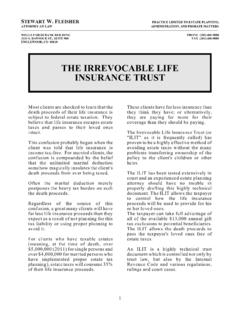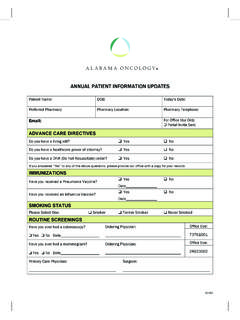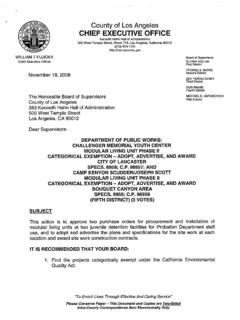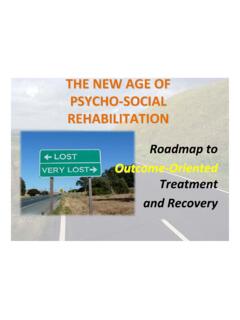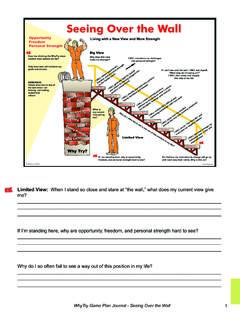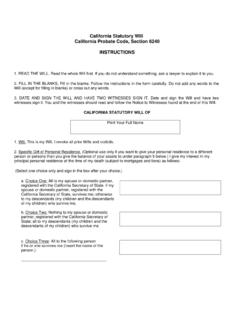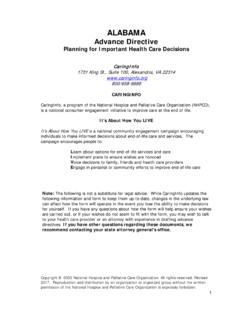Transcription of Step By Guide For Sober Living Environment Set Ups
1 CCAPP email: CCAPP web site: Step By Step Guide For Sober Living Environment Set Ups Produced by: Social Model Recovery Systems, Inc. 510 So. Second Avenue, Suite 7, Covina, CA 91723 and California Consortium of Addiction Programs and Professionals (CCAPP) 2400 Marconi Ave., Sacramento, CA 95821 Funding provided by: Los Angeles County Contract GH205984 CCAPP email: CCAPP web site: Introduction This booklet is intended as a Guide to assist persons interested in creating housing that provides a Sober Living Environment for recovering people.
2 It does not go into depth regarding history or justification of any of the steps necessary in the process of establishing such housing, rather, it is a step-by-step instruction book, with samples of recommended forms to be used for documentation and check-lists to help assure you that you are moving in the right direction. If additional technical assistance is required, the reader is advised to contact either Social Model Recovery Systems at (818) 332-3145 or the California Consortium of Addiction Programs and Professionals at (916) 338-9460. Sober Living environments are intended to provide alcohol and drug-free support, generally at affordable rent, for the maintenance of a clean and Sober lifestyle.
3 There are no license requirements for such residences, and operators are required to comply only with local zoning and occupancy ordinances. History has shown us that some operators abuse the opportunity to offer this type of housing without licensing requirements, illegally "stacking" residents or maintaining their property in sub-standard condition. Eventually, through resident complaints to zoning, housing, or other government departments, these houses are usually shut down, but not until there has been public furor over the situation, damaging the reputations of quality Sober Living establishments.
4 We also know that it is not uncommon for Sober Living houses to close before they become firmly established in the recovery community. This is generally due to lack of planning and preparation, as well as lack of consistent enforcement of rules. It is inherent on all Sober Living providers and those of us who refer to their establishments to assist one another in start-up, to watchdog the residences that we use, and to insist on legal and ethical practices within our recovery systems. CCAPP email: CCAPP web site: Getting Started When undertaking any project, it is important to understand your reason for doing it.
5 The ability to recognize and articulate the motive is important in order to maintain your momentum when facing potential barriers. Write the reason for your effort here: _____ _____ _____ _____ _____ The Potential Tenants: The first things that must be determined are: (1) who are the people that you are going to serve; (2) how many people do you need or want to house, and (3) from where will they come. The who question is significant in several ways. For example: Women with children will have very different space needs than women without children; Employed single men would be more likely to have a vehicle than male parolees just exiting prison; It is not advisable to mix genders in the same structure, unless you are planning to house families; People in wheelchairs need different accesses and interior space than people not in wheelchairs; certain groups, such as veterans, might benefit from proximity to a regional service center.
6 If you plan to include children in the house, then school facilities are important considerations. The "how many" question will dictate the type of housing that you look for. If you are associated with a large treatment program that places 10 graduates per month in Sober Living facilities, a large facility such as a hotel or apartment building might be the solution to your search. But, if you are a caring community member who wants to make sure that women leaving the local 10-bed recovery house have affordable, clean and Sober , transitional Living available, then a single-family residence will probably be adequate.
7 Notepad 1) Who? 2) How many? 3) Where from? The "where are they coming from" question will help you determine the location of your residence. If, for instance, you expect that most of your tenants will be graduates of one specific treatment program, Sober Living accommodations should be near to allow them to return with regularity to the treatment facility. If they are very-low income or difficult-to-employ individuals coming, perhaps, from a homeless shelter or from incarceration, then access to both public transportation and plentiful employment opportunities would be important in locating the residence.
8 CCAPP email: CCAPP web site: The Property: There are many considerations when selecting the property that will become your Sober Living residence. Some of those considerations were touched on in the preceding section on potential tenants. The first thing that needs to be done is to check with local zoning and housing departments to determine what type of use is allowed in what zones. Zoning classifications vary by city and by county, so it is necessary to research restrictions in the community in which you are locating. Use the following worksheet to do your research: Address of property: _____ Zoning classification: _____ Permits the following use: _____ _____ _____ Contact person for information: _____ On (date): _____ At department: _____Phone no.
9 : _____ Other notes: _____ * * * * * * * * Address of property: _____ Zoning classification: _____ Permits the following use: _____ _____ _____ Contact person for information: _____ On (date): _____ At department: _____Phone no.: _____ Other notes: _____ * * * * * * * * Address of property: _____ Zoning classification: _____ Permits the following use: _____ _____ _____ Contact person for information: _____ On (date): _____ At department: _____Phone no.: _____ Other notes: _____ * * * * * * * * Be very clear about the zoning and/or building restrictions in the neighborhood(s) in which you are planning to locate. Don't be afraid to ask questions.
10 Remember also that some subdivisions carry their own "Conditions, Covenants, and Restrictions" (CC&R's), which might affect the way that a structure within the subdivision can be used. Most information of this nature is on file with the County Clerk. If you should be purchasing the property, it will be provided to you during the course of the escrow. If you are planning to remodel an existing structure, verify with the Building Dept. that your plans are within the scope of what is allowed within the zone classification of the address of the property. CCAPP email: CCAPP web site: Other things to be considered when identifying the structure to be used are: Is the neighborhood safe, and drug-free?


